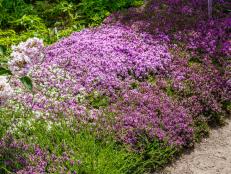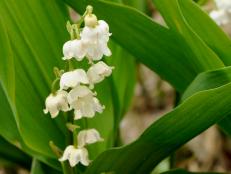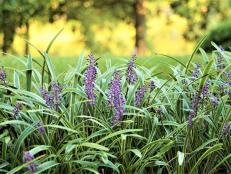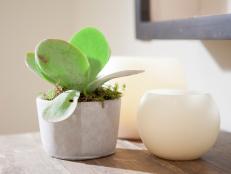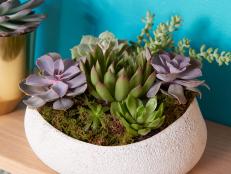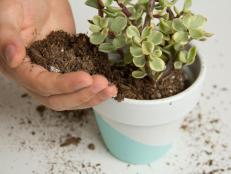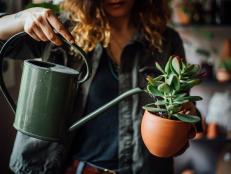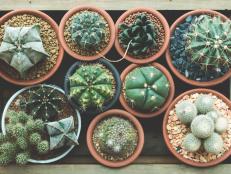Sedum spurium
Count on Sedum spurium to form a thick, drought-tolerant mat of living color.

Edge your landscape with the easy-care color of Sedum spurium. This succulent groundcover is also known as two-row stonecrop (a clue about how leaves are arranged on stems) or Caucasian stonecrop (a clue about the plant’s origins—the Caucasus region). Sedum spurium is hardy in Zones 3 to 9, so it can be grown in any region of the United States.
Most often gardeners tuck Sedum spurium into their landscapes to fill a groundcover role. This mat-forming perennial grows 3 to 6 inches tall and up to 24 inches wide. As stems crawl along the ground, they root where they touch, creating a thick mat of leaves and stems.
While this sedum doesn’t grow as quickly as Sedum sarmentosum, it can eventually overtake slow-growing alpine plants in a traditional rock garden setting. Sedum spurium has a slow to medium growth rate. If it would threaten to engulf nearby plants, simply cut stems back to where you want them. It responds well to pruning.
Like all sedums, Sedum spurium has thick, fleshy leaves that store water. Those water-hoarding leaves help make Sedum spurium drought-tolerant. It is an excellent choice for hot, dry spots in the yard. It makes a nice groundcover along driveways or sidewalk plantings, and it performs well when tucked atop a retaining wall or planted on a slope.
Sedum spurium leaves are rounded and have dainty scalloped edges near the end of each leaf. On Sedum spurium itself, leaves are green and develop a red edging as the season wears on. When cold weather arrives in fall and winter, leaves take on a bronze or burgundy tinge. In regions with mild winters, plants remain evergreen, and that cold-weather hue becomes a valuable asset for adding color to winter scenery.
Different varieties of Sedum spurium offer different leaf colors. ‘Dragon’s Blood’ (sometimes sold under the German name, ‘Schorbuser Blut’) is a popular variety, loved for its burgundy leaves. Leaves retain strong color throughout the growing season. New growth in spring begins with burgundy-hued buds. Flowers open bright pink. ‘Fuldaglut’ or ‘Fireglow’, another dark burgundy Sedum spurium, is sometimes listed as ‘Dragon’s Blood’, although they are two distinct plants.
‘Voodoo’ is touted as the darkest burgundy of the Sedum spurium varieties. Deep burgundy leaves are topped with bright pink blooms from late spring through midsummer. Plants look striking paired with lime green succulents. ‘John Creech’ has bright green leaves topped with mauve purple flowers in summer.
The Sedum spurium clan opens flowers at varying times from late spring through midsummer (July). Blossoms are star-shaped and visited by bees and butterflies. Many gardeners include different Sedum spurium varieties that flower at different times to ensure a steady parade of pollinators. For instance, ‘Dragon’s Blood’ blooms before ‘John Creech’, so planting both of these Sedum spurium varieties would ensure a long timeframe of open flowers.

.-Battle-on-the-Beach-courtesy-of-HGTV.-.jpg.rend.hgtvcom.196.196.suffix/1714761529029.jpeg)





